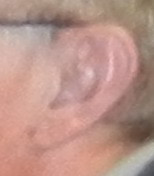A major breakthrough in the understanding of hearing and noise-induced hearing loss has been made by hearing scientists from three Pacific Rim universities.
Scientists from The University of Auckland, the University of New South Wales in Sydney, and the University of California in San Diego have collaborated for nearly 20 years on this research.
“This work represents a paradigm shift in understanding how our ears respond to noise exposure,” says Professor Peter Thorne from The University of Auckland, who is one of the co-authors of two papers published recently in the prestigious journal, the Proceedings of the National Academy of Sciences (PNAS).
“We demonstrate that what we traditionally regard as a temporary hearing loss from noise exposure is in fact the cochlea of the inner ear adapting to the noisy environment, turning itself down in order to be able to detect new signals that appear in the noise,” he says.
After the noise is turned off, hearing remains temporarily dull for some time while it readjusts to the lack of noise.
“Clinically, this is what we measure as a temporary hearing loss,” says Professor Thorne. “This has always been regarded as an indication of noise damage rather than, in our new view, a normal physiological process.”
The researchers show that this is due to a molecular signalling pathway in the cochlea, mediated by a chemical compound called ATP, released by the cochlear tissue with noise and activating specific ATP receptors in the cochlear cells.
“Interestingly, if the pathway is removed, such as by genetic manipulations, this adaptive mechanism doesn’t occur and the ear becomes very vulnerable to longer term noise exposure and the effects of age, eventually resulting in permanent hearing loss.”
“In other words the adaptive mechanism also protects the ear,” says Professor Thorne.
The second paper, done in collaboration with United States colleagues, reveals a new genetic cause of deafness in humans which involves exactly the same mechanism.
People (two families in China) who had a mutation in the ATP receptor showed a rapidly progressing hearing loss which was accelerated if they worked in noisy environments.
“This work is important because it shows that our ears naturally adapt to their environment, a bit like pupils of the eye which dilate or constrict with light, but over a longer time course,” Professor Thorne says.
This inherent adaptive process also provides protection to the ear from noise and age-related wear and tear. If people don’t have the genes that produce this protection, then they are more likely susceptible to developing hearing loss.
“This may go some way to explaining why some people are very vulnerable to noise or develop hearing loss with age and others don’t,” he says.
“Our research demonstrates that what we have always thought was temporary noise damage (i.e. the temporary hearing loss experienced in night clubs or a day’s work in factories), may not be this, but instead, is the ear regulating its sensitivity in background noise."
“Although our research suggests that our hearing adapts in some noise environments, this has limits,” says Professor Thorne. “If we exceed the safe dose of noise, our ears can still be damaged permanently despite this apparent protective mechanism.”
“People need to protect their ears from constant noise exposure to prevent hearing loss and this is particularly important in the workplace and with personal music devices which can deliver high sound levels for long periods of time,” he says.
The lead scientists from each of the universities in the study were; Professor Gary D. Housley, Chair of Physiology and Head of Physiology, and Director of the Translational Neuroscience Facility at the University of New South Wales in Sydney; Professor Peter Thorne, Departments of Physiology and Audiology at the University of Auckland, and Deputy Director at the Centre for Brain Research (The University of Auckland); Dr Srdjan Vlajkovic, Department of Physiology, University of Auckland and Professor Allen Ryan, Departments of Surgery and Neurosciences, University of California, San Diego.
This research has been funded by the Health Research Council of New Zealand and the Deafness Research Foundation of New Zealand and other funding bodies in Australia and the United States.
News article courtesy of The University of Auckland
